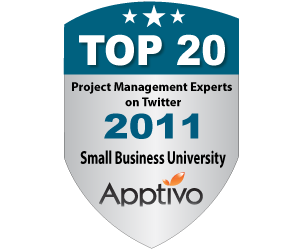Power Up Your Agile Product
Planning & Analysis: Collaborate to Deliver Value
|
|
- Ellen Gottesdiener,
Founder, Principal Consultant, EBG Consulting, Inc.
|
 |
Wednesday, August 8th, 2012, 1:00
- 2:00 PM ET
Reserve your webinar seat now at: https://www1.gotomeeting.com/register/264528265 |
|
For continual value
delivery, stakeholders must partner to reach a shared understanding of the
product needs. How does this partnership gain a focused yet holistic
understanding of the highest-value needs? How to the partners effectively plan
so that the delivery team builds the right product, at the right time?
Join Ellen
Gottesdiener, co-author with Mary Gorman of the soon-to-be released book, Discover to Deliver:
Agile Product Planning & Analysis, and learn how to engage in
"structured conversations" that explore, evaluate and confirm product
options.
Ellen shares the 7 Product
Dimensions and shows how they both transcend and deepen stories and personas.
She explains how you collaborate to discover options, assess options using the
partners' value considerations and allocate options to delivery cycles. You'll
learn how these conversations fuel your daily product discovery work, enable
you to quickly plan and analyze to deliver high-value candidate solutions.
Bonus! One lucky
attendee will win a copy of the just released book, Discover to Deliver:
Agile Product Planning & Analysis.
Participants will
also receive a subscription to EBG's eNewsletter, Success with Requirements.
By registering you
submit your information to the webinar organizer, as well as the presenter, to
communicate with you regarding this event and their other services.
About Ellen Gottesdiener
Ellen
Gottesdiener
is founder and principal of EBG Consulting, experts helping you deliver
high-value products your customers want and need. Ellen is an internationally
recognized facilitator, coach, trainer, speaker and expert in agile product
management practices, product envisioning and roadmapping, business analysis and
requirements, retrospectives, and collaboration. She works with global clients
and speaks at numerous numerous industry conferences.
Author of two acclaimed books-Requirements
by Collaboration
and The
Software Requirements Memory Jogger- Ellen is co-authoring (with Mary
Gorman)
a book on practical agile planning and analysis practices. View articles,
Ellen's tweets and blog, free
eNewsletter,
and find a variety of useful practitioner resources on EBG's website, ebgconsulting.com.
About EBG Consulting
EBG Consulting experts
help you deliver high-value products your customers want and need. Based on
many years of experience in a variety of domains, EBG helps you calibrate your
practices to produce timely, quality products. EBG is a leader in helping
business and technical teams collaborate to deliver valued, useful and usable
products using the agile practice. EBG helps you incorporate appropriate
business and requirements analysis practices to ensure a shared understanding
of product needs.








